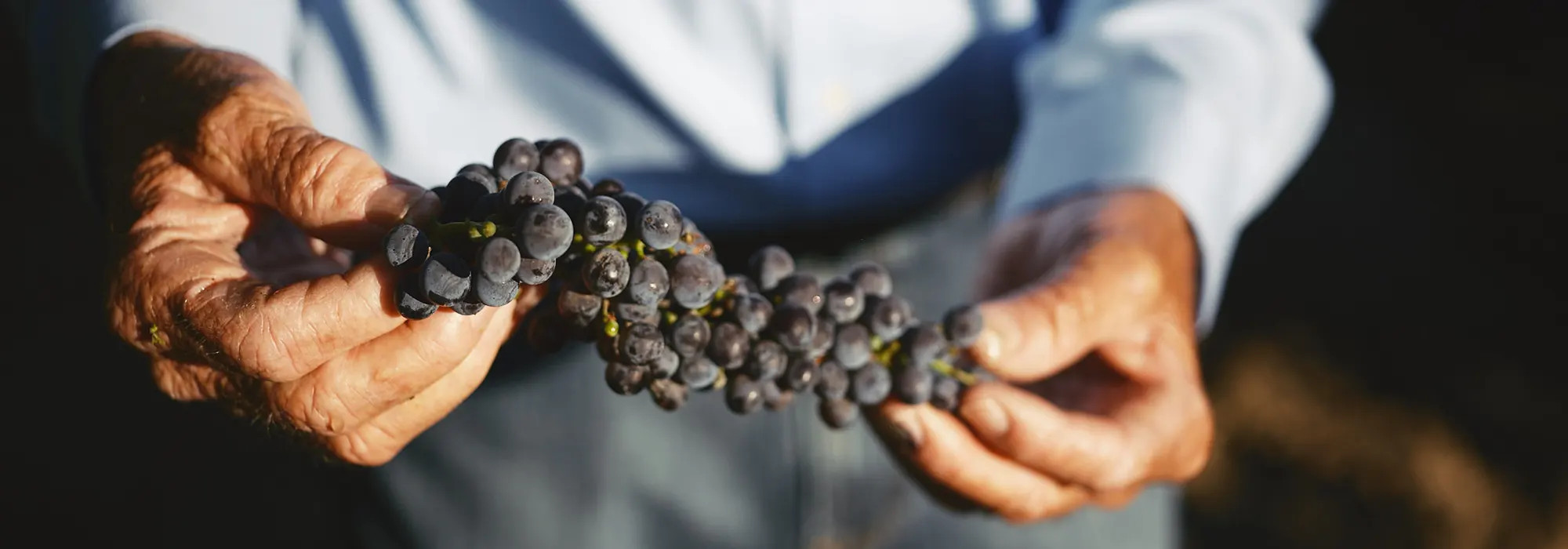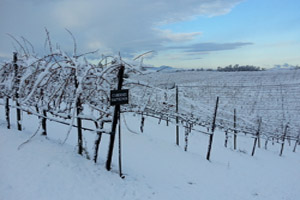Move Over Pumpkin Spice; We’ve Got Delicious Fall Wines
While we realize seasonal transitions in Southern California aren’t always so obvious – sunny and 85 degrees to sunny and 79 degrees, for example – we still don’t like to miss out on the festive changes we associate with the weather getting crisper and the days getting shorter.

One of these changes is, of course, reaching for those fantastic in-between wines that mark the Fall season. You know the ones – the rich, nutty Chardonnay instead of the bright and fresh Pinot Grigio; the light-bodied red packed with juicy red fruit instead of the salmon-colored rosé.
It’s not holiday season yet, and we’re still not ready to move into cold weather wines, but pumpkin spice has started creeping into everything, and we find ourselves eyeing those cozy sweaters in the back of the closet. In celebration, we have compiled a guide to some of our favorite wine for transitioning into cooler Fall weather.
BOLD WHITES
Peltzer Family Cellars Chardonnay
Says Pelzer Tasting Room Manager Danae Wager, “The transition from summer to Fall is not always smooth (like we insist our wines to be). As the weather cools off, we love to feature our Chardonnay with any dish that would typically be paired with a lighter bodied red wine to ease the transition in temperature.”
This robust Chardonnay boasts notes of yellow apple, apricot, and lemon meringue pie and is perfect for homemade Fall soups. Think: roasted butternut squash or loaded baked potato soup to warm the palate.
Fazeli Cellars Oaked Chardonnay
This luscious white is aged on the lees in French and Hungarian oak barrels for eight months. It exudes all that one expects from a classic California Chardonnay, with notes of Fuji apples, pear, pineapple, and prominent warm, toasty oak notes on the finish.
“Fall in Temecula seems to be staying warmer and warmer!” Says Leoness Cellars Executive Director, Spencer Szczygiel. “Around this time of year, I’ll often reach for a white wine with a little more weight to it – our Leoness Viognier being a favorite.”
He explains that the Viognier’s stone fruit and spice notes pair exceptionally well with heartier fall salads like peppery greens with apple, blue cheese, nuts and grilled chicken – which are great if you want to avoid turning on the oven during the lingering Southern California Fall heat.
Showing complex yet light and airy aromas of honey, wild herbs, water chestnut, and pear skin, this golden-colored wine immediately draws the attention of the taster. This is a rich and very full-bodied wine, with flavors of apricot, pear, and a slight nuttiness like honey-dipped cashews, that carry this wine through a long and harmonious finish – just like the slow transition from Summer to Fall in the beautiful Temecula Valley.
HEARTY REDS:
Palumbo Family Vineyards & Winery Monastrell
This is a lighter red wine with hints of cherry and cedar, making it perfect for a sunset charcuterie board or even a fish dish, as well as classic options like chicken and pasta. This is the ideal red on a warm day when something rich and velvety doesn’t feel quite right.
Peltzer Family Cellars Estate Sangiovese
This medium-bodied Sangiovese is packed with maraschino cherries, pomegranate, allspice, and violet. It’s a great wine for Thanksgiving, with the red fruit notes enhancing the traditional turkey dinner flavors. “You may need more than one bottle to satisfy the in-laws!” jokes Tasting Room Manager Danae.
Chapin Family Vineyards Montepulciano
This wine is the perfect choice if you’re looking for an elegant, light-bodied red, packed with an abundance of aromas and flavors of cherry, blackberry, currant, and fresh herbs, with soft, round tannins, and a smooth, dry finish. Pair this with a backyard sunset as the cool evening breezes set in.
“Mehregan” is the Persian harvest festival celebrating the Autumn solstice. This earthy Grenache (with a touch of Shiraz) lovely to sip as we prepare for winter and toast to the close of our long summer days. It’s got bright Bing cherry cola and anise notes and a medium body, with soft supple tannins on the finish.
Lorimar Winery Grenache-Syrah-Mourvedre
This quintessential Rhône Valley-style blend is the perfect wine for the cooler fall months, boasting aromas of red currant, ripe plum, cocoa and a pleasant touch of Red Vines.
This bright, vibrant sipper is the ultimate light red wine for this time of year. When grown and harvested in Temecula Valley, Cinsault features all the fall fruit flavors from cherries to berries to complement the comfort foods of the season.
A blend of 78% Grenache, 14% Syrah, 8% mourvedre, and aged in French and American oak barrels for 18 months, this wine is medium-bodied with aromas and flavors of raspberries and cherries complemented by hints of tobacco, earth, and spice leading into a soft, lengthy finish.
“During this unique transition between seasons, my favorite wine is our 2017 Grenache,” says Leoness Director of Hospitality Leonard Grose. “With its lighter body and vibrant rhubarb and clove hints on the nose and palate, this wine is perfect for a hearty fall chicken soup with lentils, carrots, and celery.”
This jewel-toned Primitivo dazzles with aromas of raspberry crème, cherry liqueur, and autumn leaves. On the palate it stays true to the Puglian style, balancing fresh acidity and a pleasant jamminess, with flavors of black cherry, and smooth, well-integrated tannins. This is the perfect wine to enjoy as the sun sets a bit earlier and the twilight beckons us to enjoy the lovely fall weather.
A LITTLE SOMETHING SWEET
Bel Vino Winery Late Harvest Blanc
Grapes harvested later in the season have a chance to develop rich, ripe aromas and accumulate high sugar levels. When pressed and vinified the resulting wines are lusciously sweet and make a stellar pairing for salty cheeses and dessert courses – or can serve as dessert course themselves!
“What better way to experience fall, than with a late-harvested, intensely flavorful and aromatic Late Harvest Blanc,” says Mike Janko from Bel Vino Winery. “The relatively high sugar levels balanced by bright acidity make it great for sipping or to be enjoyed as a dessert wine.”




 So, what exactly goes on in the vineyards when it’s winter time? The annual growth cycle of Temecula Valley’s grapevines consummates in autumn with leaf fall followed by vine dormancy. After harvest, typically August-October in Temecula, the vine’s roots and trunk are busy storing carbohydrate reserves produced by photosynthesis in their leaves. Once the level of carbohydrates needed by the vine is reached, the leaves change from green to yellow and start to fall off the vines. Usually after the first frost, the vine enters its winter dormancy period. During this time, winemakers get a break from the bulk of their farm work as the vines sleep and start to prepare for the next wine season.
So, what exactly goes on in the vineyards when it’s winter time? The annual growth cycle of Temecula Valley’s grapevines consummates in autumn with leaf fall followed by vine dormancy. After harvest, typically August-October in Temecula, the vine’s roots and trunk are busy storing carbohydrate reserves produced by photosynthesis in their leaves. Once the level of carbohydrates needed by the vine is reached, the leaves change from green to yellow and start to fall off the vines. Usually after the first frost, the vine enters its winter dormancy period. During this time, winemakers get a break from the bulk of their farm work as the vines sleep and start to prepare for the next wine season.



